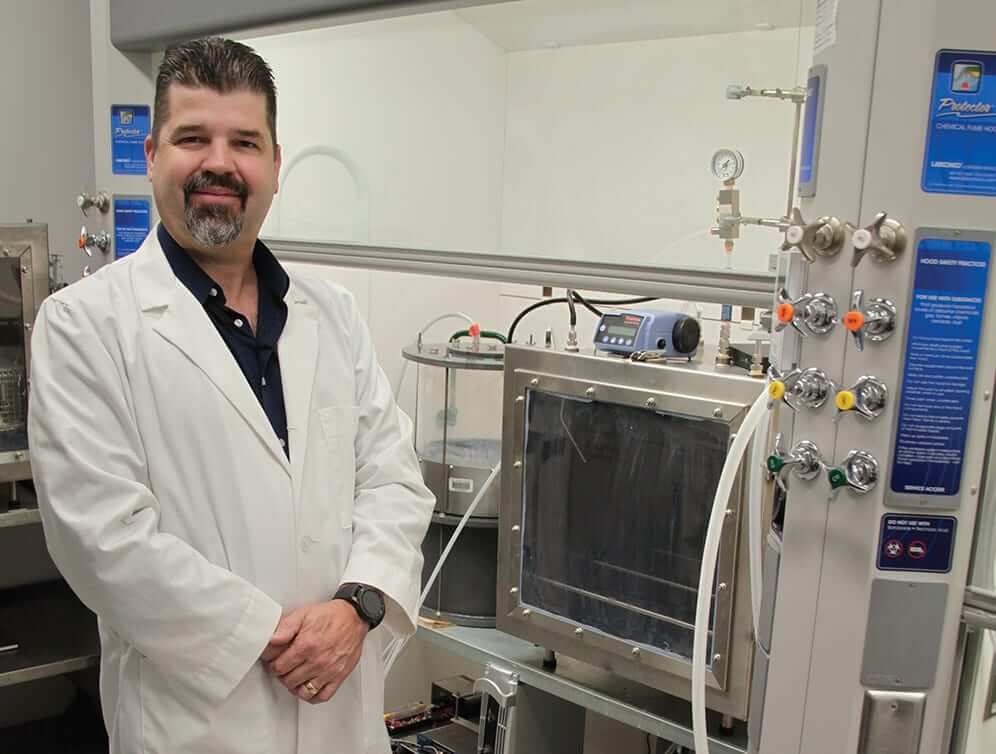➼ A master’s degree in exercise physiology from WVU and several years’ work in cardiopulmonary rehabilitation led Tim Nurkiewicz to a specialized Ph.D. in microvascular physiology—the study of the very tiniest blood vessels. He researches what happens when we inhale pollution and other nanoparticles. Success with his previous laboratory, one inhalation chamber that handled environmental pollutants, earned a significant upgrade. The animal studies on particle inhalation done at his new Inhalation Laboratory at WVU are so sophisticated, the lab is already in international demand. Morgantown caught up with Nurkiewicz to discuss his work.
On measuring toxics The magic of our facility is that we characterize aerosols in real time. We can report with authority exactly what the aerosol concentration and size distribution are. We also sample aerosols for microscopy analyses. Very few labs can do this.
On the facility We’ve got three research wings, each with two exposure chambers. Their purpose is to generate aerosols and assess the health effects of pollutant inhalation. The first wing studies aerosolized nanomaterials; the second, unique toxicants like e-cigarettes and 3D printer emissions; and the third, the emissions coming from engines.
Why real-time is where it’s at Two decades ago, less sophisticated forms of our approach were done across the country. Unfortunately, as federal funding dries up, so do the resources to run laboratories like this. But take e-cigarettes, a complex witches’ brew of unidentified toxicants. If you analyze the composition after it’s settled, it’s not what one inhales. You’re missing all of the gases and the unique particle dispersion. Also, everything tends to agglomerate—small particles that we can’t see bind with others into things we can see. It’s not an accurate representation of what’s deposited in the lung. If you can’t measure it, you can’t assess the exposure.
On his own research into effects on fetuses In recent years, the National Institutes of Health recognized that there’s a black hole regarding female cardiovascular health—the vast majority of the research is focused on men. It seemed critical to study the impact of particle inhalation on gestational health, as there’s no other point in our lives when so many things are changing so fast in the circulation. The vasculature has to grow longer, thicker, and larger. We also have to grow new vessels. The questions we ask are pretty pointed, and we’re seeing both maternal and fetal consequences.
On the value of the research Nanotechnology holds tremendous promise for the protection and advancement of countless human endeavors. Medically, it can be used in drug delivery, in imaging agents, and in devices that protect the body from diseases. But the way it’s handled now is one-size-fits-all, and we know that’s incorrect. If we identify the hazardous nanomaterials or the characteristics that are incompatible with human health, by default we identify what is safe. Other scientists may then study and advance those materials. And that will benefit society en masse.
interviewed by Pam Kasey | photographed by Carla Witt Ford
